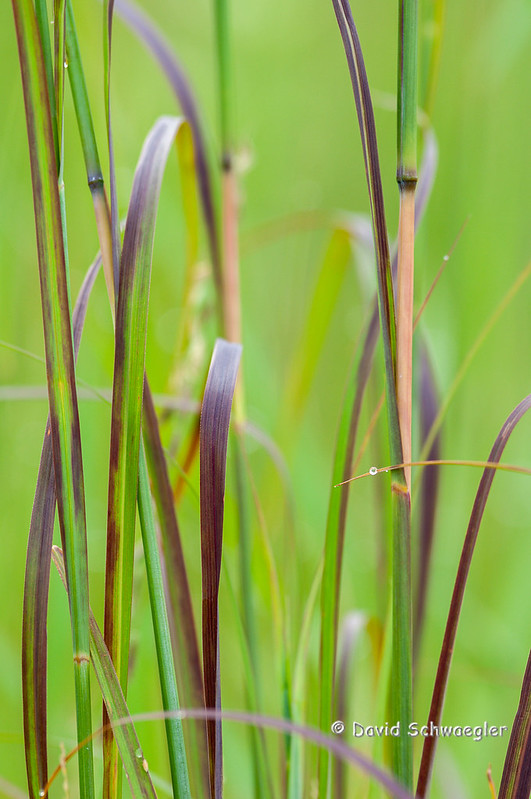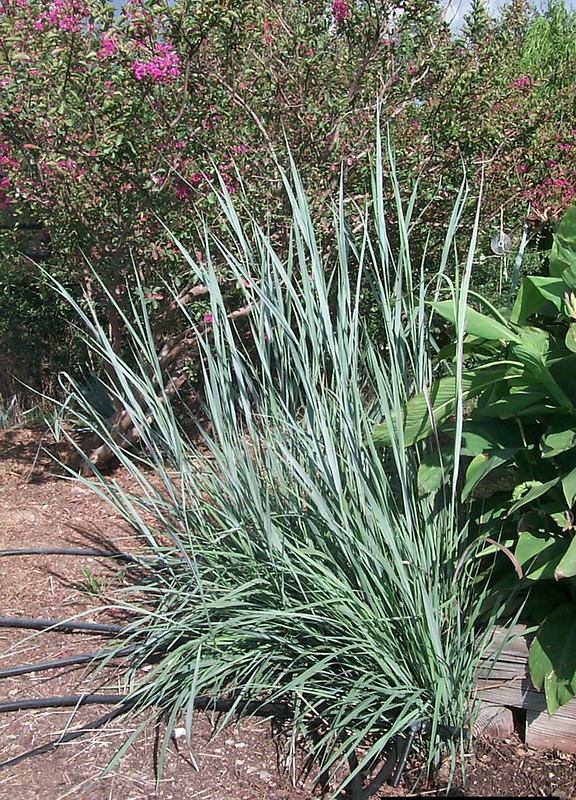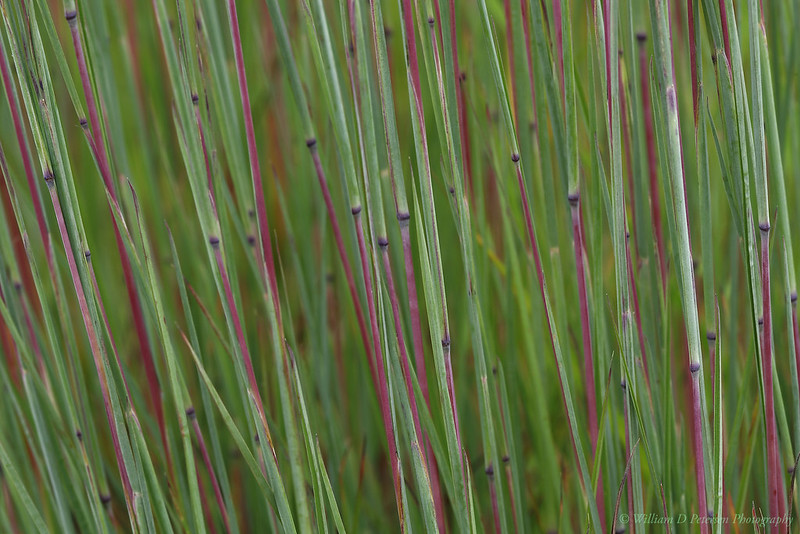Big Bluestem Grass, scientifically known as Andropogon gerardii, is a tall, native grass widely recognized for its stunning ornamental value and ecological benefits.
This hardy grass species thrives in a wide range of environmental conditions, making it a popular choice for landscaping projects, restoration efforts, and even as a forage crop.
In this article, we will delve into the fascinating world of big bluestem grass, exploring its growth requirements, cultivation techniques, and essential care tips to help you successfully grow this remarkable grass in your backyard.
What is Big Bluestem Grass
Big Bluestem Grass is a warm-season, perennial bunchgrass that belongs to the Andropogoneae tribe of the Poaceae family.
With its towering height, reaching up to 6-8 feet, and striking blue-green leaves that turn shades of purple and red during fall, big bluestem grass adds both charm and beauty to any landscape.
Its sturdy stems and dense root system make it an excellent choice for erosion control, soil stabilization, and wildlife habitat creation.
| Aspect | Details |
|---|---|
| Scientific Name | Andropogon gerardii |
| Common Names | Big Bluestem, Turkeyfoot |
| Family | Poaceae (Grass family) |
| Type | Warm-season perennial grass |
| Native Range | North America |
| Mature Height | 4 to 8 feet (1.2 to 2.4 meters) |
| Sun Exposure | Full sun |
| Soil Requirements | Well-drained, various soil types |
| Drought Tolerance | Highly drought-tolerant |
| Temperature Tolerance | Thrives in warm climates |
| Growing Conditions | Adaptable to different conditions |
| Foliage Color | Bluish-green, turning red in fall |
| Flowering Period | Late summer to early fall |
| Seed Heads | Distinctive three-parted seed heads |
| Wildlife Value | Provides habitat and forage for wildlife |
| Landscaping Use | Ornamental, prairie restoration |
| Invasiveness | Non-invasive |

Choose the right variety of grass
Choosing the Right Location
Before you dive into growing big bluestem grass, it is crucial to identify the perfect location within your garden that caters to the specific needs of this grass. Here are a few key factors to consider:
Sunlight: Big bluestem grass thrives in full sun, so choose a location that receives at least 6-8 hours of direct sunlight per day.
Soil: This grass is adaptable to a wide range of soil types, including clay, loam, or sandy soil. Ensure proper drainage to prevent waterlogging and root rot.
Moisture: While big bluestem grass is highly drought-tolerant once established, it initially requires consistent moisture during the germination and establishment phases. Consider the availability of water sources or irrigation systems in the chosen location.
Propagation Methods
Big bluestem grass can be propagated through two main methods: seeds and plugs. Let’s explore both methods in detail:
Seeds
Growing big bluestem grass from seeds is a cost-effective and relatively easy option. Here’s a step-by-step guide:
Seed Collection: Collect mature seeds from existing big bluestem grass plants during late summer or early fall. Look for brown-colored seeds that easily detach from the seed head.
Seed Treatment: While big bluestem grass seeds are naturally dormant, scarification or stratification can enhance germination.
Scarification involves scratching the seed coat gently, while stratification implies cold-moist treatment to simulate natural winter conditions. Research specific requirements for the selected seed batch or consult a local nursery for guidance.
Sowing: Prepare the soil by removing weeds, debris, and stones. Create furrows or trenches with a depth of about 1/4 inch. Sow the seeds evenly along the furrows and cover them lightly with soil.
Watering: After sowing, water the area thoroughly but gently to avoid displacing the seeds. Maintain consistent soil moisture until germination occurs, typically within 7-14 days.
Thinning: Once the seedlings reach a height of 3-4 inches, thin them out to a spacing of 12-18 inches between individual plants or as recommended for your region. This allows ample space for each plant to grow and prevents overcrowding.

Plugs
Plugging involves transplanting well-established big bluestem grass plants into your garden. This method is advantageous if you desire instant impact and more precise spacing. Follow these steps to propagate big bluestem grass through plugs:
Source Plants: Purchase healthy big bluestem grass plugs from reputable nurseries or native plant suppliers. Ensure that the plants are well-rooted and disease-free.
Site Preparation: Prepare the planting site by removing weeds, rocks, and debris. Loosen the soil to encourage root growth and add organic matter, if required.
Planting: Dig individual holes with a depth and width slightly greater than the root ball of each plug. Place the plugs carefully into the holes, ensuring that the crown of the grass is level with the surrounding soil. Fill the hole with soil, firming it gently around the plug to eliminate air pockets.
Watering: Immediately after planting, water the plugs thoroughly to settle the soil and encourage root establishment. Provide regular watering during the first few weeks to support their initial growth.
Spacing: Ensure appropriate spacing between the plugs, following the recommended guidelines for big bluestem grass. Allow enough room for the plants to reach their mature size without competing for resources.
Essential Care Tips
Now that you have successfully established big bluestem grass in your garden, it’s important to provide the necessary care to ensure its optimal growth and appearance. Here are some key care tips to follow:
Watering: While big bluestem grass is known for its drought tolerance, regular watering during prolonged dry periods is vital for maintaining its vigor and color.
Aim to provide deep, infrequent waterings that penetrate the root zone rather than shallow, frequent watering.
Fertilization: Big bluestem grass generally thrives in nutrient-rich soil and rarely requires additional fertilization.
However, conducting a soil test can help determine if any specific nutrient deficiencies need to be addressed. Consult your local extension office or a professional for accurate soil testing and fertilization recommendations.
Mowing: Big bluestem grass can withstand mowing, but it is best kept uncut during the winter season to provide habitat for overwintering wildlife.
In late winter or early spring, before new growth emerges, you can trim back the grass to a height of 6-12 inches. This promotes healthier growth and maintains a neat appearance.
Weeding: Keep an eye out for invasive weeds that can compete with big bluestem grass for nutrients and space. Regularly inspect the planting area and manually remove any unwanted vegetation to prevent their encroachment.
Mulching: Applying a layer of organic mulch, such as wood chips or straw, around the base of big bluestem grass plants helps conserve soil moisture, suppress weeds, and insulate the root zone during extreme temperatures.
Maintain a mulch depth of 2-4 inches, ensuring it does not come into direct contact with the grass stems.
Division: Over time, mature clumps of big bluestem grass may require division to maintain their vigor and prevent overcrowding.
Dividing the grass every 3-4 years during early spring helps rejuvenate the plants and promotes healthier growth.
Types of Bluestem Grass
Big Bluestem (Andropogon gerardii):
- Native to North America.
- Tends to grow in tall, upright clumps.
- Known for its distinctive three-parted seed heads.
Little Bluestem (Schizachyrium scoparium):
- Native to North America.
- Forms compact, upright clumps.
- Exhibits a bluish-green hue that turns bronze or red in the fall.

Broomsedge Bluestem (Andropogon virginicus):
- Native to North America.
- Features bushy, broom-like seed heads.
- Often found in dry, sandy soils.
Yellow Indiangrass (Sorghastrum nutans):
- Native to North America.
- Characterized by its golden-yellow, feathery seed heads.
- Grows in tall, upright bunches.
Silver Bluestem (Bothriochloa laguroides):
- Native to North America.
- Has a silver-gray appearance.
- Thrives in dry, sandy soils.
King Ranch Bluestem (Bothriochloa ischaemum):
- Introduced species.
- Commonly used as forage but can become invasive in certain areas.
Conclusion
Big Bluestem Grass is a true gem in the world of ornamental grasses, boasting both visual beauty and ecological benefits.
With its adaptability, robust nature, and stunning color changes throughout the seasons, growing and caring for big bluestem grass is a rewarding endeavor for gardeners of all levels.
By following the guidelines outlined in this article, you can create a thriving, sustainable landscape adorned with the splendor of big bluestem grass.
So, let the majestic beauty of this native grass grace your garden, inviting birds, butterflies, and a renewed appreciation for the wonders of nature.
FAQs
What is the bluestem used for?
Big Bluestem Grass is used for various purposes, including erosion control, wildlife habitat, forage for livestock, and ornamental landscaping.
What are the benefits of big bluestem grass?
Benefits include soil stabilization, wildlife support, carbon sequestration, and its adaptability to different soil types and climates.
Who eats bluestem grass?
Bluestem grass serves as forage for various wildlife species, such as deer, rabbits, and numerous bird species. It is also grazed by livestock like cattle.
Why is it called big bluestem?
The name “Big Bluestem” is derived from the bluish-green color of its stems and leaves, and the term “big” refers to its significant height, which can reach 4 to 8 feet.
Is big bluestem grass good for cattle?
Yes, Big Bluestem Grass is a valuable forage for cattle. It provides nutritious feed, and its drought tolerance makes it suitable for grazing in various conditions.
